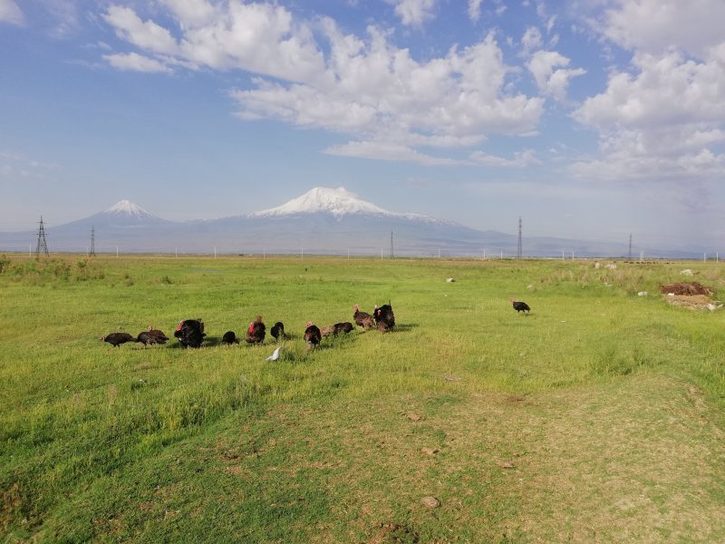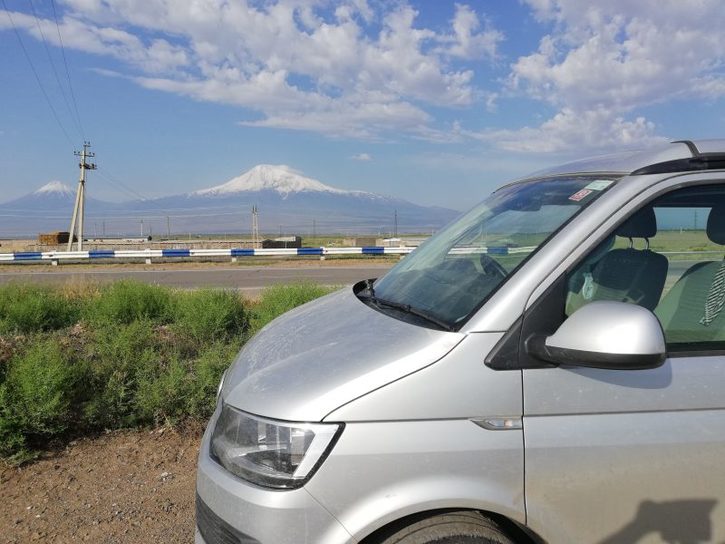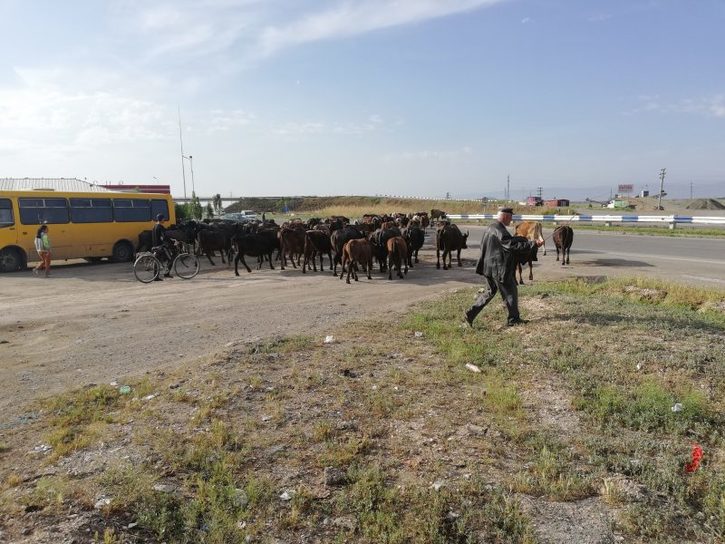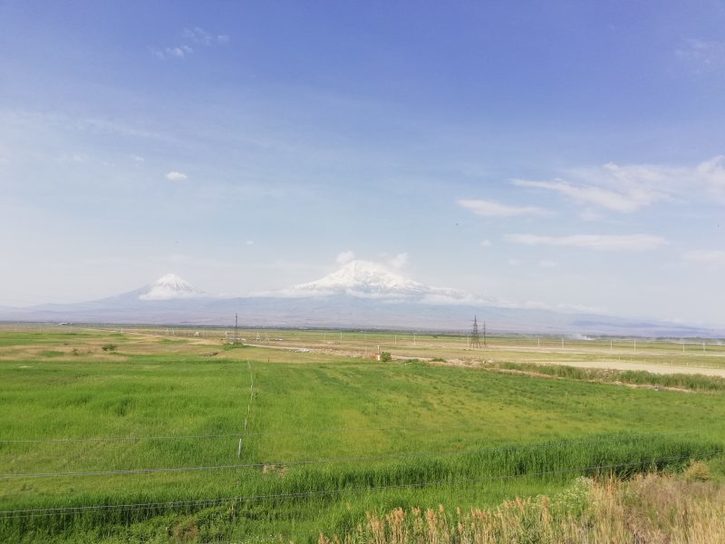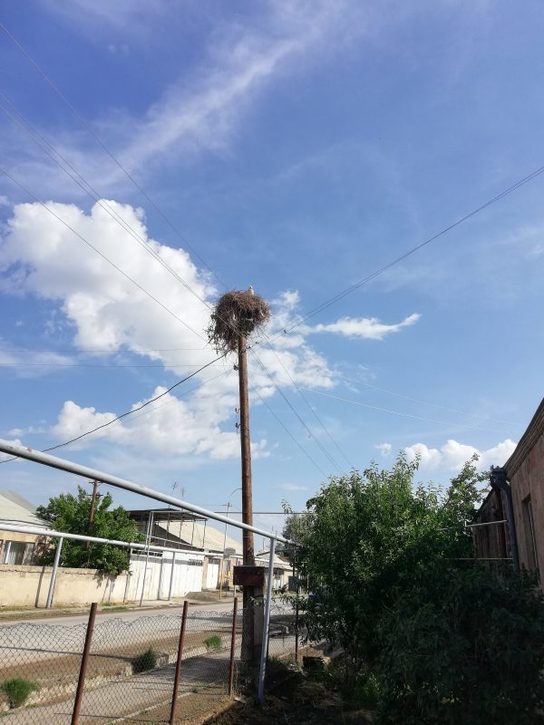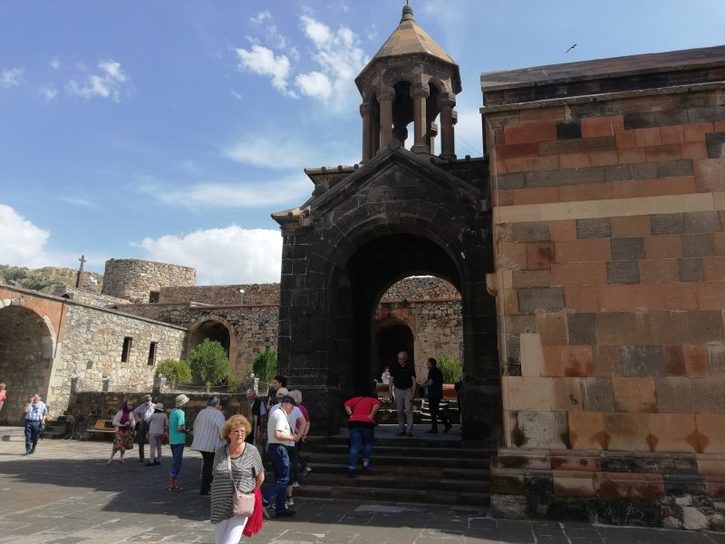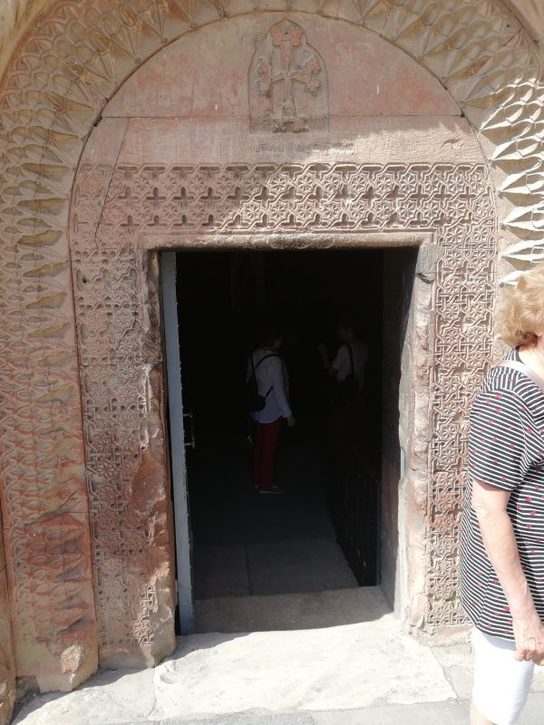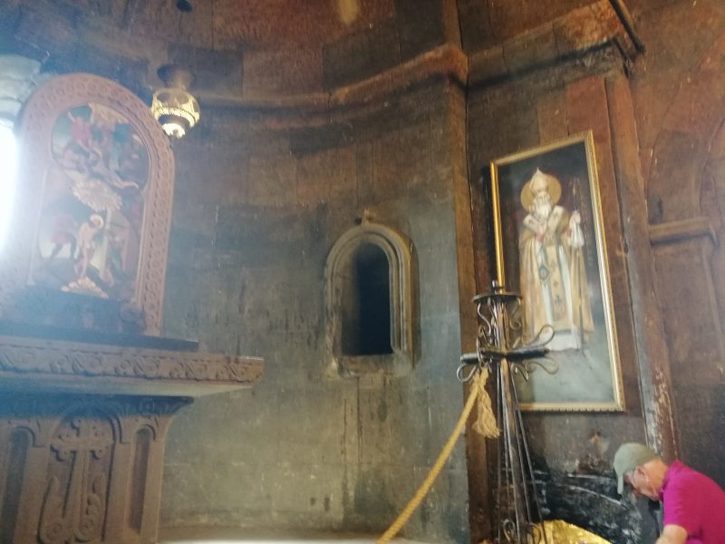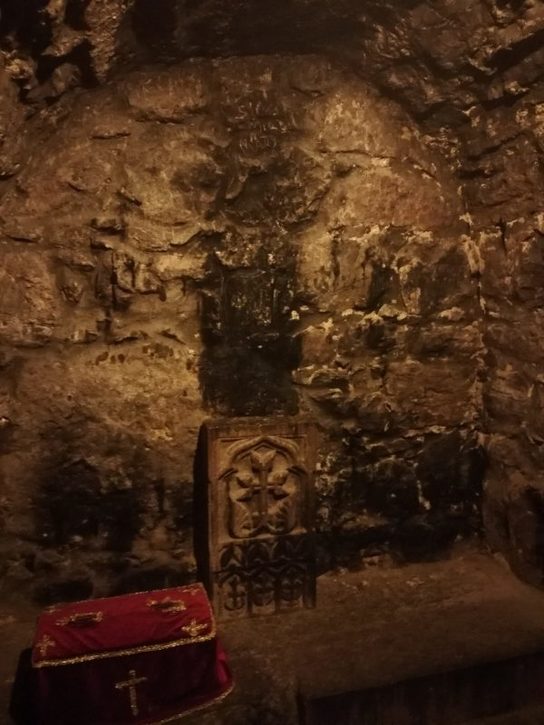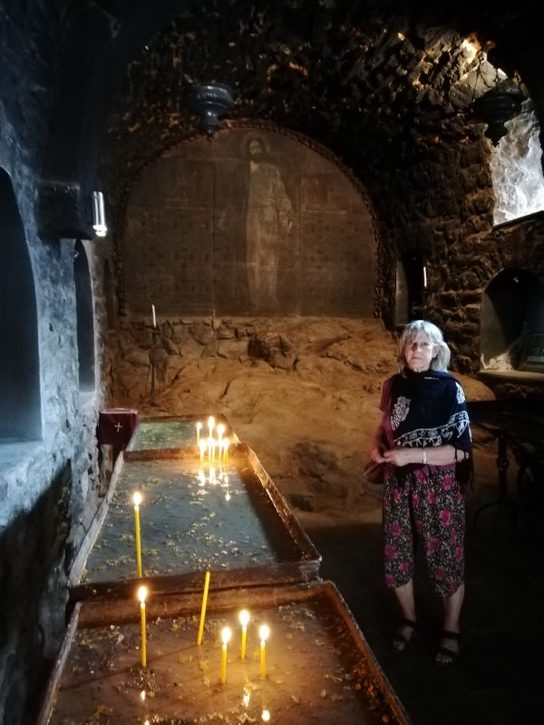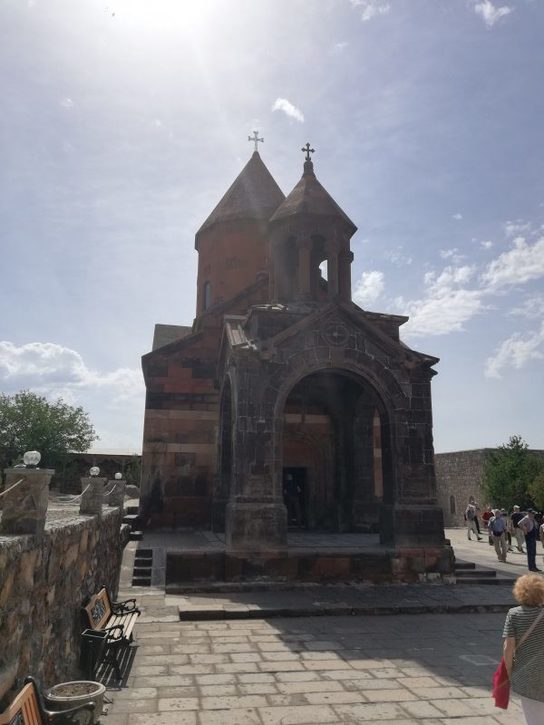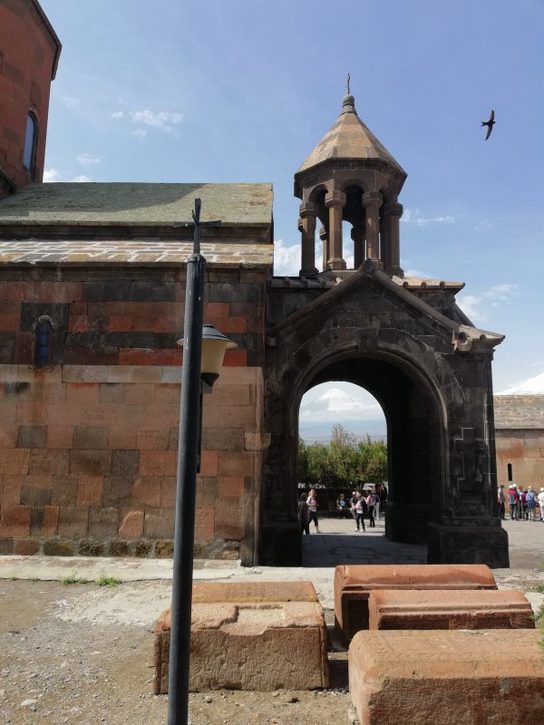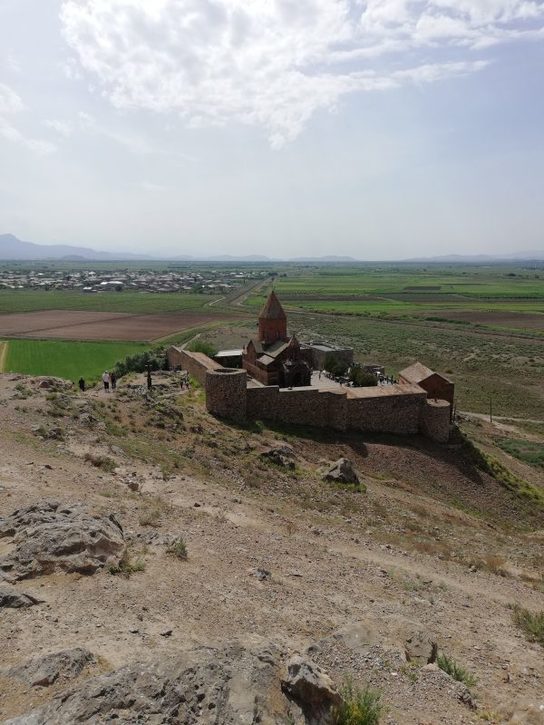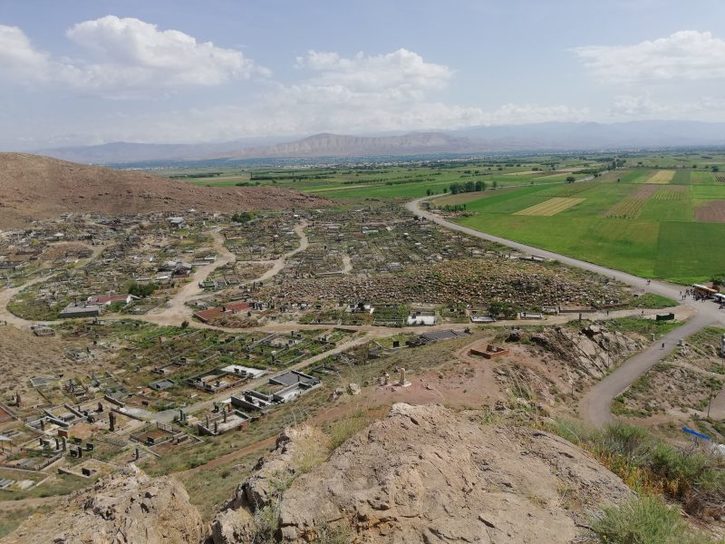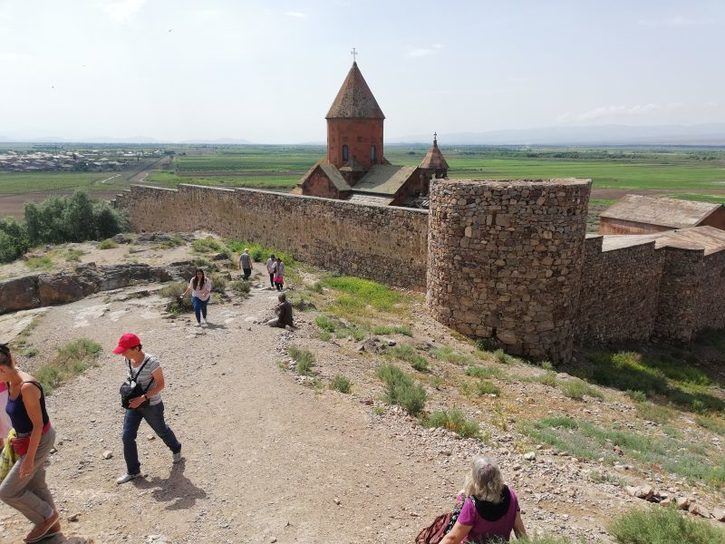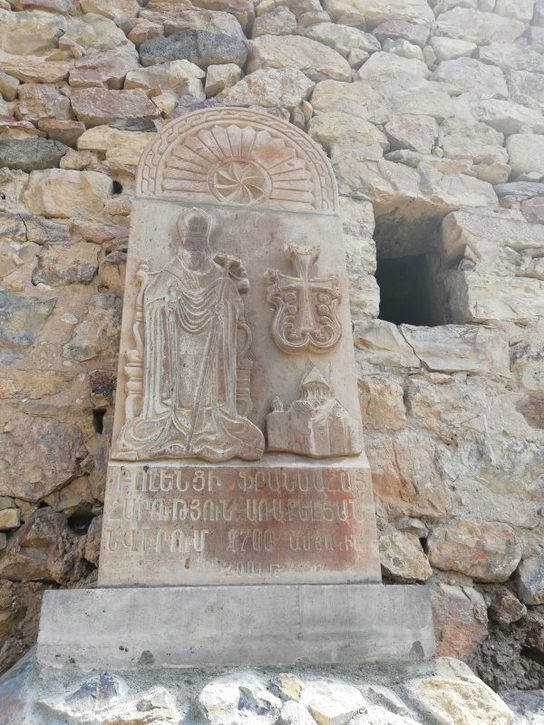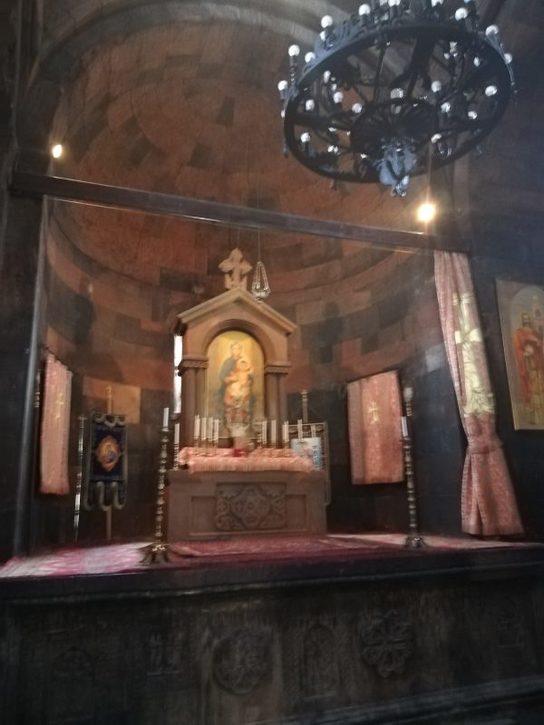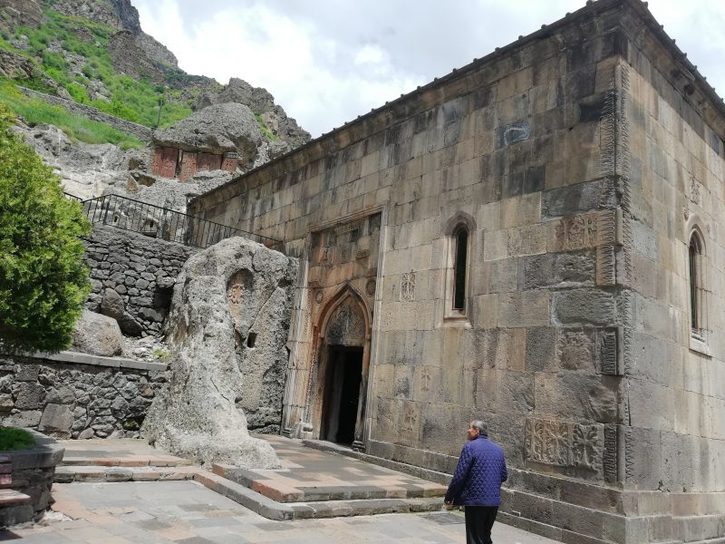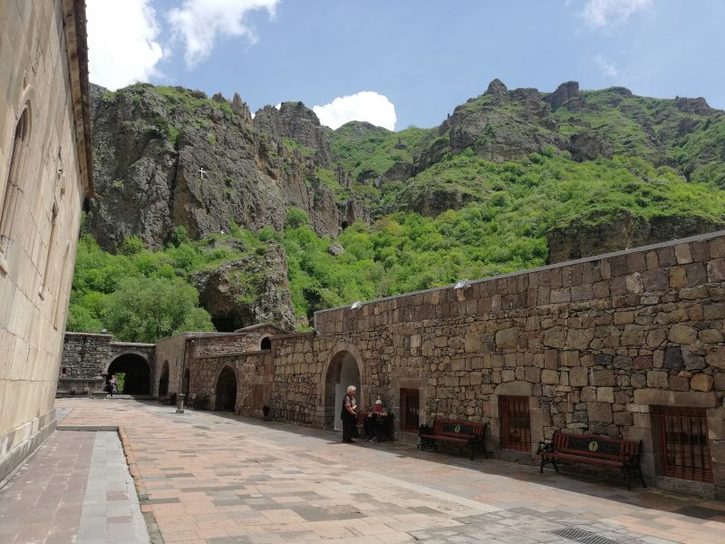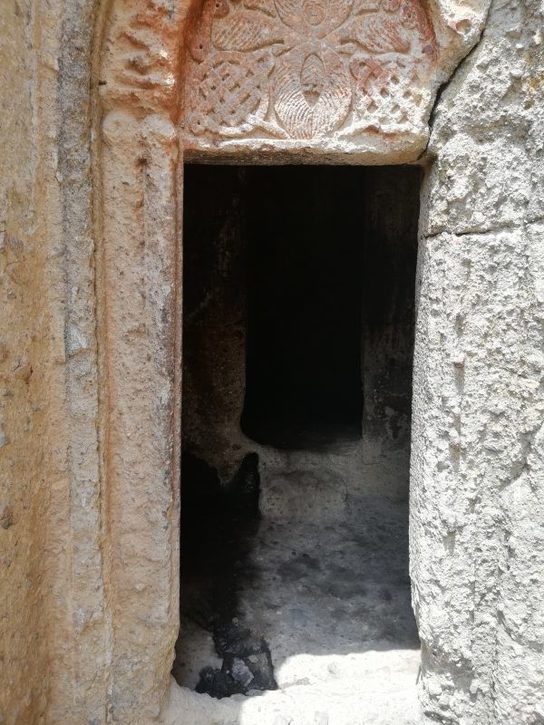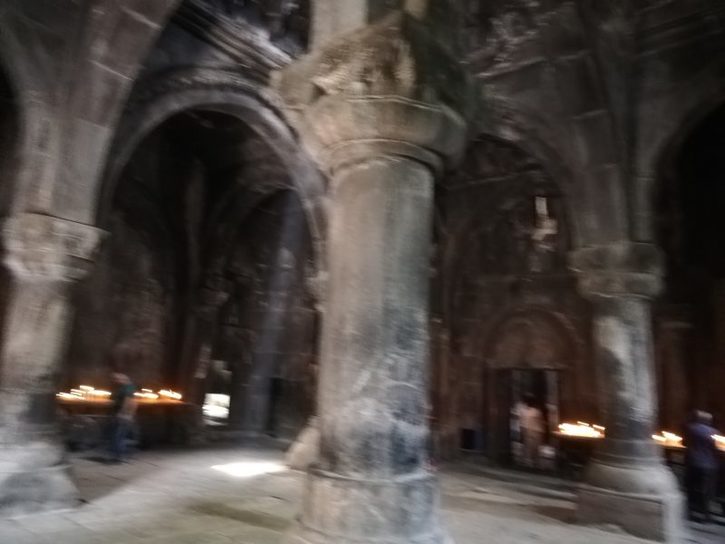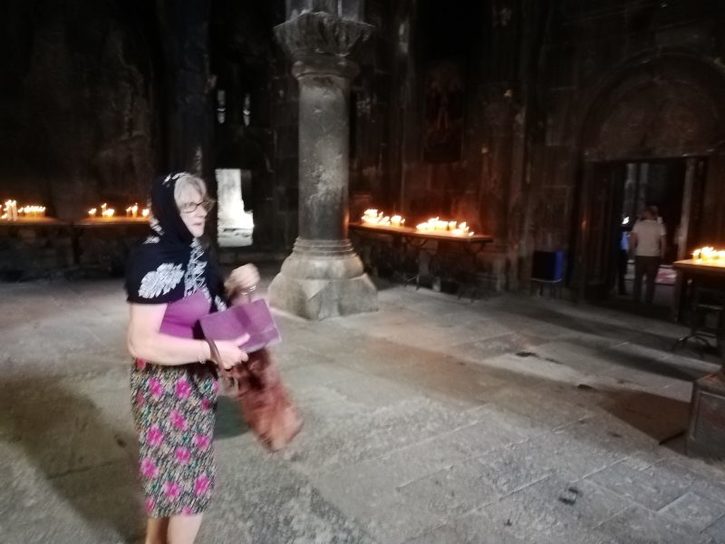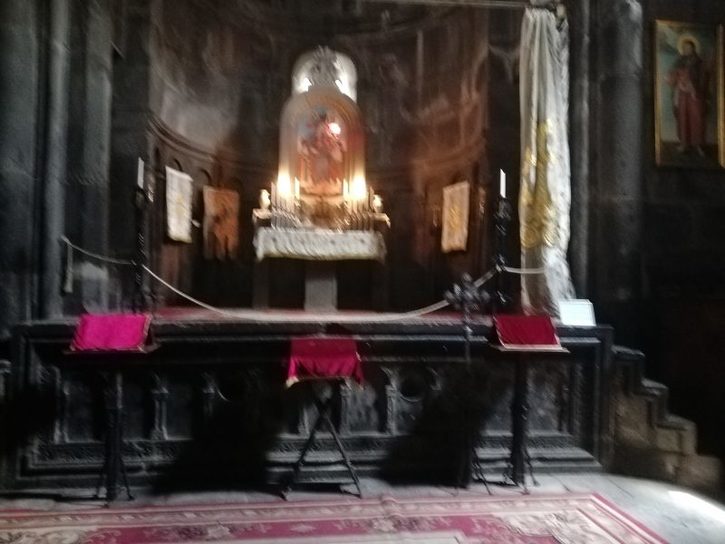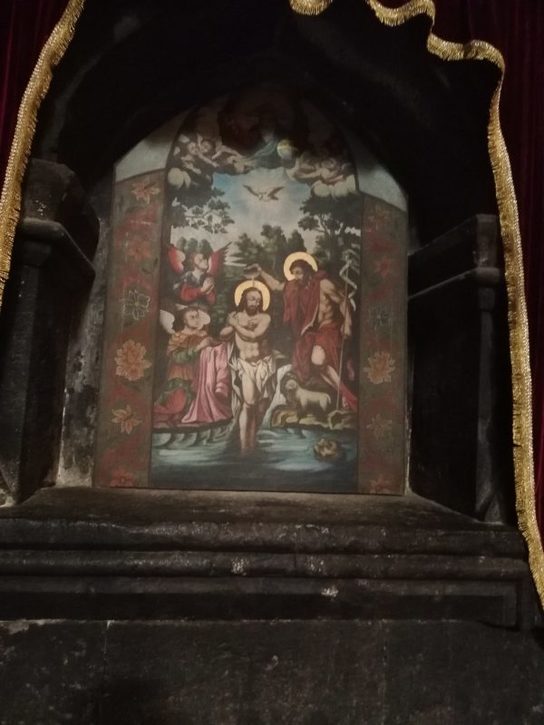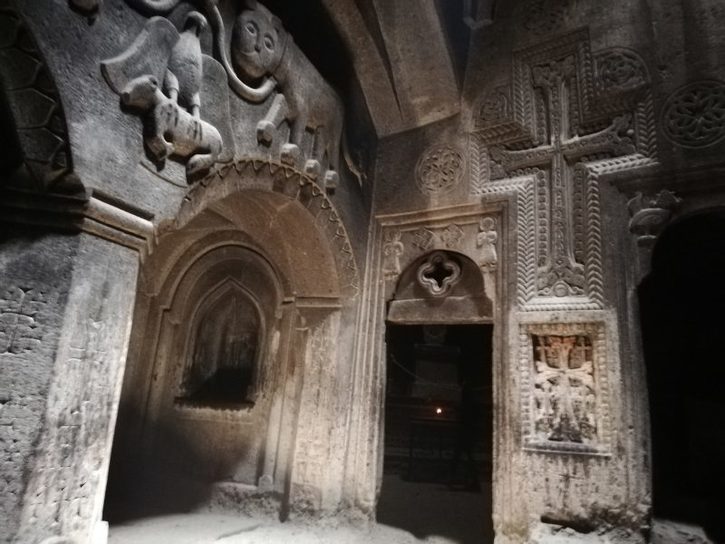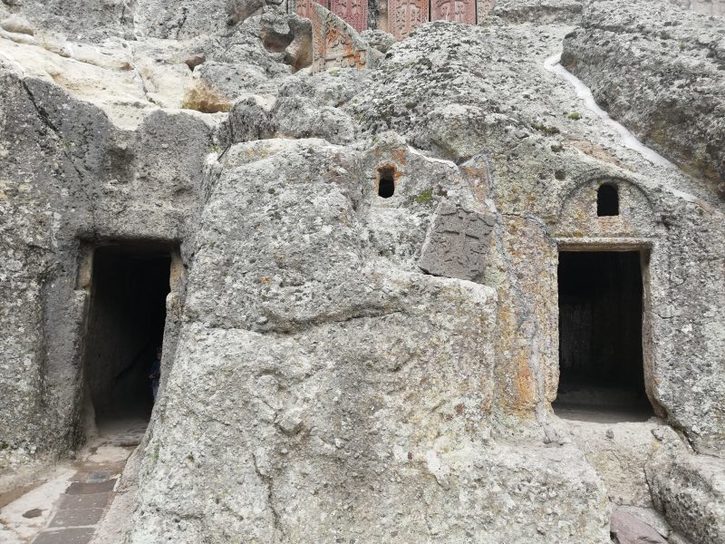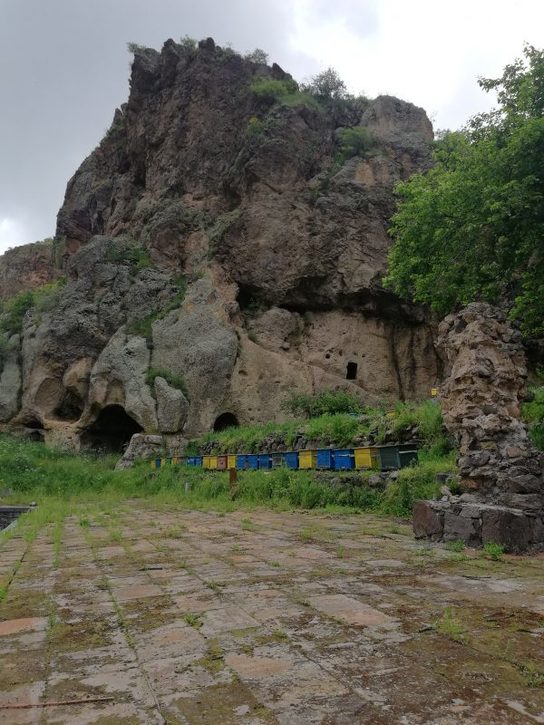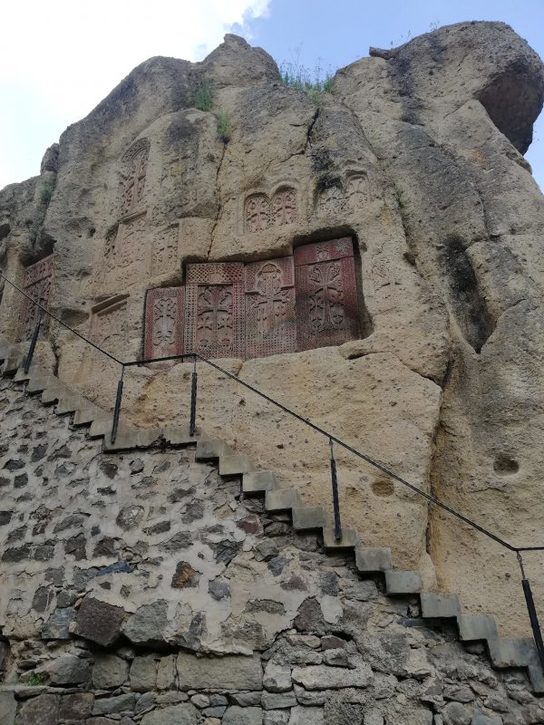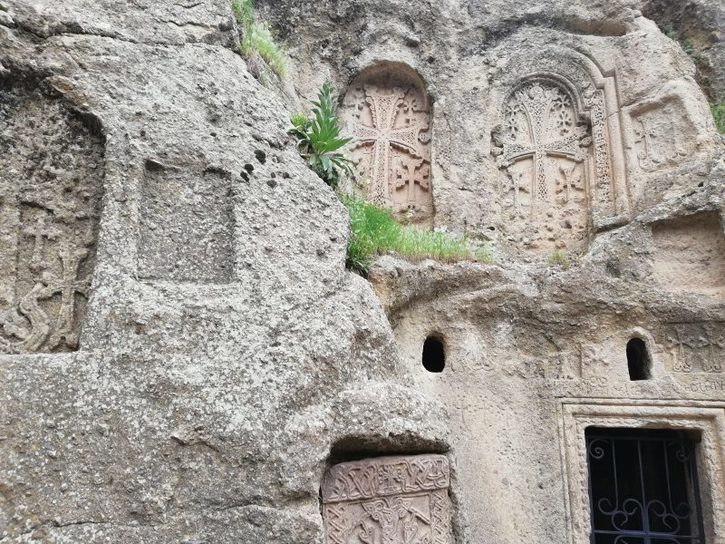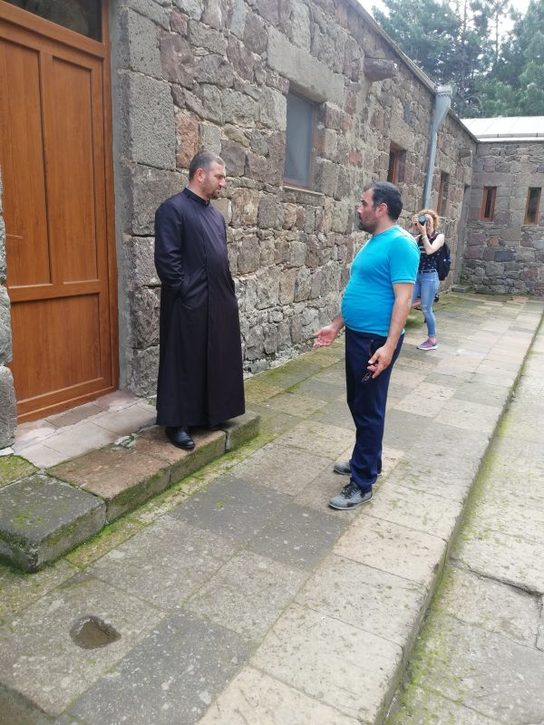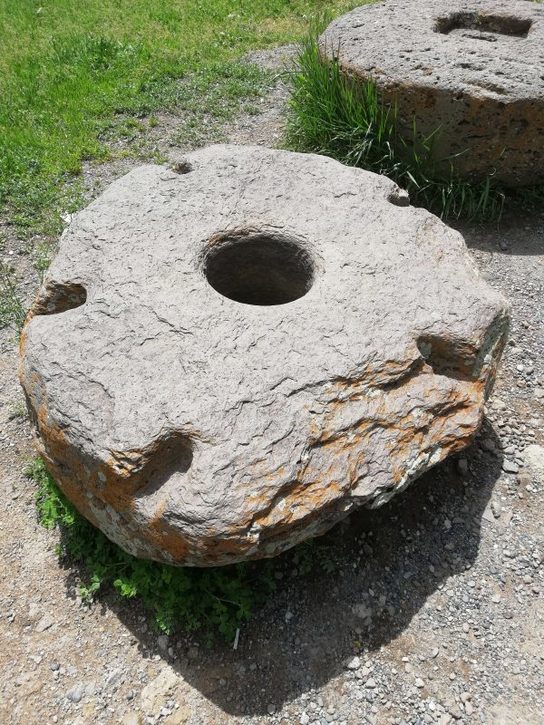Day Sevan, Armenia
Khor Virap and Geghard monasteries were what made filling in numerous forms, signing countless signatures and paying £4.89 insurance for visiting Armenia all worthwhile.
Khor Virap is located to the north of Mt Ararat (5,165 metres and 3,925 metres; there are two of them) right on the Turkish border. It was founded on the site of a pagan temple to the goddess Anahit by King Artashes I, who created his capital of Artashat here in 189 BC. The founder of the Armenian Apostolic Church, Gregory the Illuminator, was imprisoned in a deep pit for 13 years with snakes and scorpions (origin of the name Khor Virap) before beginning his ministry with King Trdat I. I climbed down the almost vertical ladder into the pit but didn’t see any snakes or scorpions, only members of a Chinese tour group.
The two key features are the St Astatsvatsin Church and the single nave basilica with its pit. According to Plutarch and Strabo, the city’s site and design were attributed to the Carthaginian general Hannibal who, during the Battle of Magnesia (190 BC) was defeated by Antioch the Great and fled to become Trdat’s advisor. Artashat remained the capital of greater Armenia for 600 years despite being occupied and burned by the Romans in 59 AD. The Romans were then defeated in 63 AD and the Emporer Nero agreed to acknowledge the rule of King Trdat on condition that he received his crown from Nero in Rome. In 66 AD, he returned to Artashat and rebuilt the city. In 114 AD, the Emporer Trajan invaded Armenia and occupied Artashat. During a rebellion gainst Roman rule in 163, the city was destroyed. It was rebuilt and remained the capital of Armenia until 335 when the capital was moved to Dvin. Artashin was destroyed by the Persian king Shapur III in 368. It was rebuilt until the fall of the Arhkuni dynasty and the population taken captive in 428.
At its height in Second-First centuries BC, Artashat had a population of 150,000, making it one of the biggest cities of the Hellenistic world. Gregor the Illuminator was thrown into the pit of snakes by King Trdat who became angry when he learned that he was a secret Christian, and further enraged on learning that he was the son of the man, Anak, who murdered Trdat’s father, Khosrov the Great, on behalf of the Persian Sassanids in 287. He was released after Trdat became a Christian in 301..
The Basilica was destroyed during the Timurid invasions of the 14th century and rebuilt in the 17th century.
Geghard Monastery is located to the east of Yerevan at the end of a long winding (and ever-rising) road to the head of a deep gorge with springs of beautiful water. It was occupied in pre-Christian times with remains found in a cave in the main building. The monastery was founded at the beginning of the 4th century by Gregory the Illuminator and became known as the “Monastery of Caves” because it is surrounded by small caves in the hillsides where the monks lived an extremely austere life. They reached their caves by climbing ropes or ladders.
In 920 Armenia was invaded by Arab armies and the Arab Vice Regent for the area, Nasr, plundered the monastery. It was rebuilt, although many ancient manuscripts were lost. The monastery was encircled with fortifications and inscriptions dating to 1160 hve been found. The current monastery dates back to the 13th century when the Orbelian king and his generals the Zakarian brothers retook large parts of Armenia from the Seljuks including Geoghard monastery.
At its height in the 13th Century, it held alleged reliquaries including the lance used to pierce Christ and a wooden fragment said to be part of Noah’s ark. They gave the monastery its current name Geghardavank (Monastery of the Spear). The main part was completed in 1286 and originally included a mausoleum. Its acoustics are perfect for the Sharakan, the Armenian sonorous chant. The monastery was also a musical school and a famous teacher, Sahakhadukt, was a woman. Women were not allowed to be seen by monks so she taught from behind a curtain.
We spent the night at the head of the Sevan Peninsular, which juts into Lake Sevan, and culminates in a hill with the ruins of Sevanavank Mnastery on top of it. A hermitage was established in 306 by Gregory the Illuminator, but it fell into disuse before the monastery was built in 874. It was then destroyed in the 995 earthquake. It was also pillaged and destroyed during the Mongol and Timurid invasions. The current structure was built in the 17th century. The basilica was demolished in the Stalin era of the 1930’s and a rather sad feature is the the small heaps of stones placed on its foundations in a symbolic act of rebuilding. The renovation of the rest of the site was started in 1956 immediately after the death of Stalin and a new policy of religious tolerance was introduced under Krushchev.
The newish building in the pics was built in the 1990’s and is now a working monastery.
